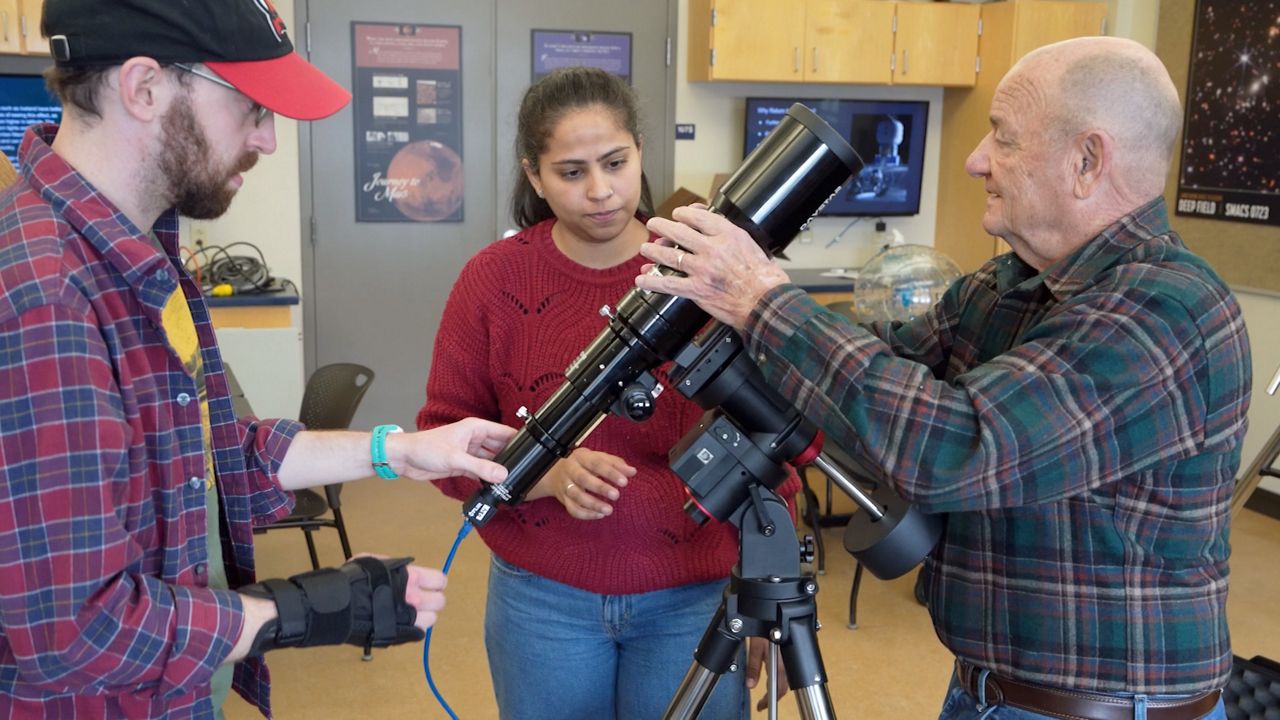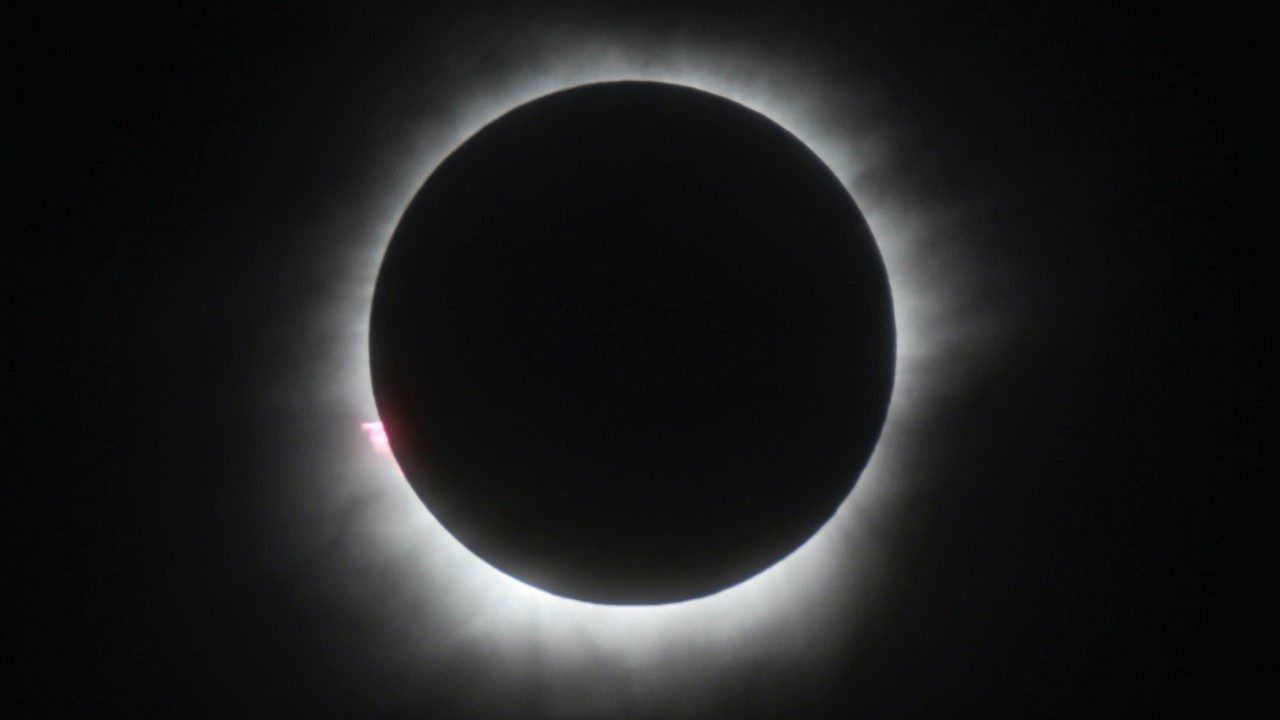Next month’s total solar eclipse may turn out to be a boon to tourism in some communities in northern Maine, but scientists are also hoping the rare event will yield valuable data about the sun’s behavior.
“It’s an important piece to understand better,” said Shawn Laatsch, director of the Versant Power Astronomy Center and Maynard Jordan Planetarium at the University of Maine at Orono.
On April 8, the moon will pass between the earth and the sun at just the right position to block the view of the sun itself. The sun’s corona, or upper atmosphere, however, will still be visible.
Laatsch said observers normally can’t see the corona because the sun itself is too bright. Laatsch said the sun’s upper atmosphere is where solar winds and solar flares come from.
“It’s important for us to understand it because the solar wind and solar weather affects our planet,” he said.
Solar flares, or blasts of radiation the sun occasionally produces, are largely harmless to humans, and sometimes pretty. They are partially responsible for the Aurora Borealis, for example.
But that’s only because humans have the protection of an atmosphere, something Earth-orbiting satellites don’t have. Laatsch said this was a problem in 2022, when a solar storm knocked out about 25 communications satellites, some of which never recovered.
The center will be participating in a NASA network of 35 stations stretching from Maine to Texas observing and photographing the corona during the eclipse.
Scientists hope the data they collect next month during the eclipse will give them a little more insight into how and why these solar storms happen, and when we can expect them to happen again.
For the rest of us, the eclipse promises to be quite a show, provided people take care to protect their eyes.

Staring into the sun for long periods at any time can do damage to retinas, and since people stare at the sun for a while during the eclipse Laatsch recommended people spend a few dollars to purchase solar eclipse glasses, which block 99.9% of the sun’s light.
Some industrial glass, such as welder’s face shields, Laatsch said, will also work, but only if they are rated #14 or higher. Traditional sunglasses, even polarized, he said, are not good enough.
“Sunglasses help, basically, in reducing glare, so you can see when you’re driving or sporting, or when you’re doing fishing or things like that,” he said. “The solar eclipse glasses really block out the sun’s light to protect your eyes.”
For optimum viewing, observers in Maine need to be in the right place. For the sun to be totally obscured, viewers need to be within a 127-mile-wide path that will stretch across the northern part of the state.
The center’s website provides resources to see exactly where it will be visible in Maine, but Laatsch said communities such as Jackman, Millinocket and Houlton will be able to see it. The eclipse will last as much as three minutes and 28 seconds, he said.
Eclipses happen often, such as a recent solar eclipse in 2017, but that one wasn’t entirely visible from Maine. In fact, Laatsch said, the last total eclipse visible in the Pine Tree State happened in 1963, and scientists agree the next one visible from Maine won’t happen until 2079.
Laatsch said he has seen five total eclipses from various points around the world, and recommends people take the opportunity to see it.
“It’s one of the most dramatic things you’ll see in all of nature,” Laatsch said. “It’s definitely worthwhile to see.”









